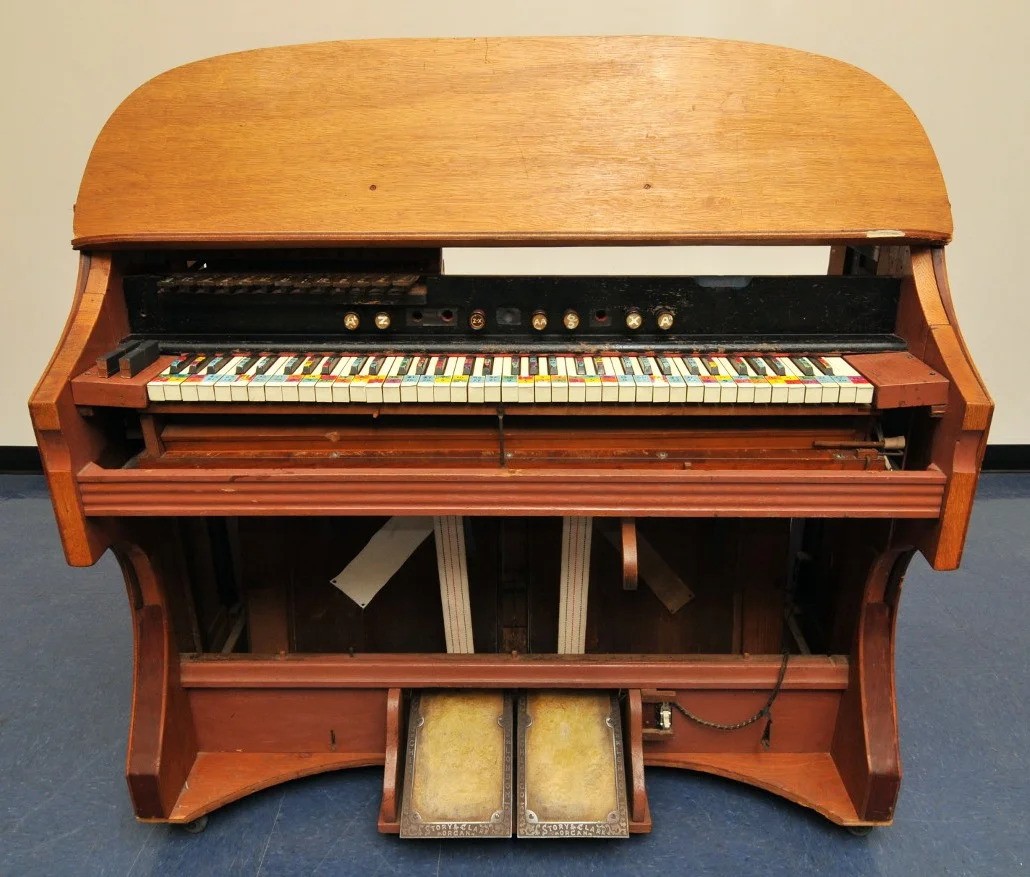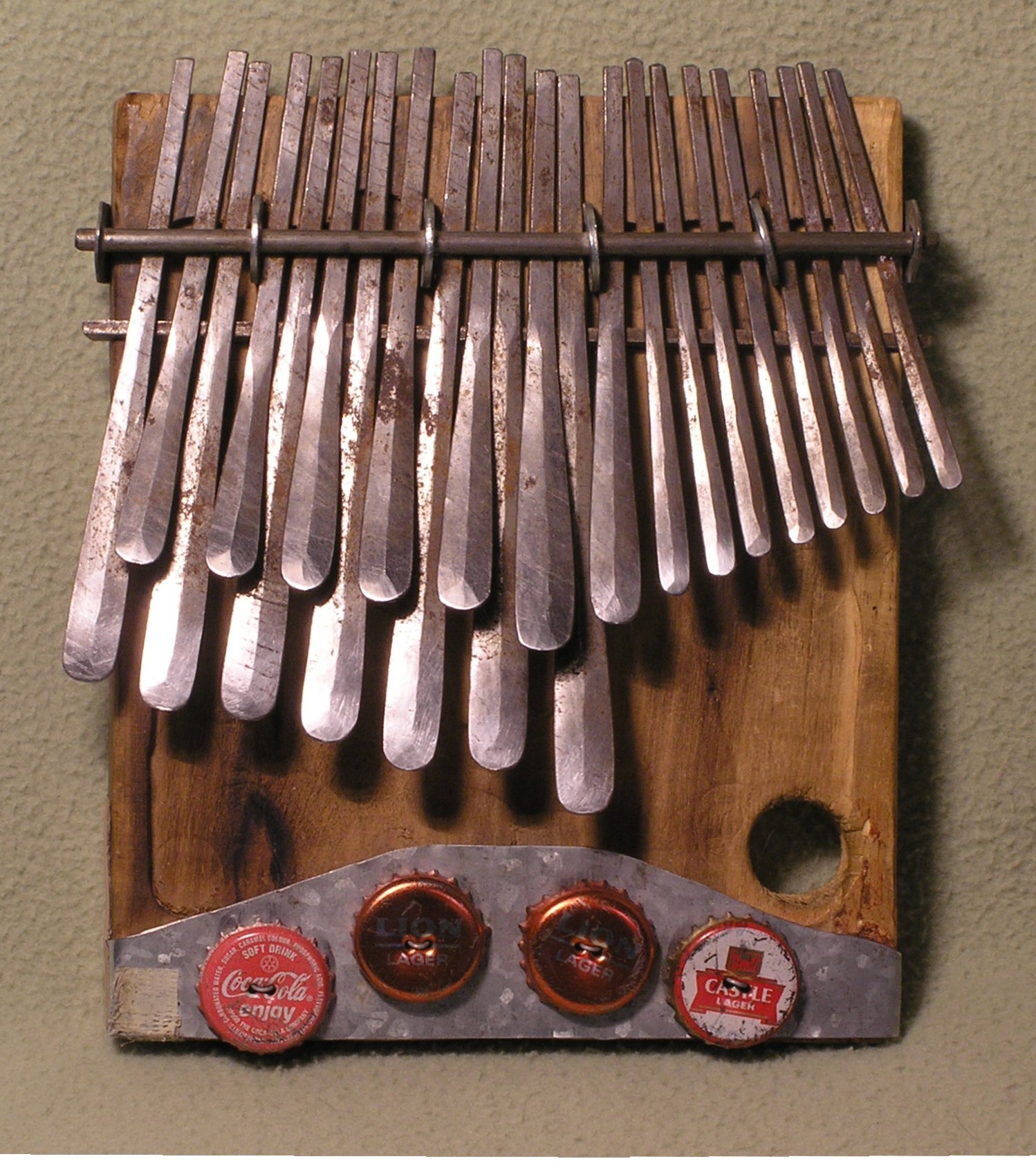Developing Styles
Harry Partch's Middle Period
The middle period of Harry Partch’s artistic evolution was characterized by increased experimentation with instrument-building and his experience as a transient on the road and in Depression-era work camps. From 1934 to 1935, Partch studied in England thanks to a grant from the Carnegie Foundation. There, he conducted firsthand research into instruments he had read about in On the Sensations of Tone and met several prominent literary figures and musicians, such as William Butler Yeats and Ezra Pound. During this period, he continued building instruments – some creations from this time are the adapted guitar and a keyboard instrument called the Ptolemy.
 Partch's Chromelodeon
Partch's Chromelodeon
In the spring of 1935, Partch returned to the United States, and by June he had begun an extended transient existence in the American West. During these months, Partch was homeless, working in federal work camps, hitchhiking and keeping notes on the speech inflections of people he met in his travels. During the early 1940s, while living in Chicago and on the east coast of the United States, he continued building new instruments, including a kithara, a harmonic canon, and the “chromelodeon,” an adapted harmonium.
Harry Partch's U.S. Highball (1943)
Partch’s compositions still largely involved setting words to music, but the origins of the text he was setting had shifted from ancient literature to contemporary Americana texts. This interest is on display in San Francisco, depicting a newsboy’s cries in the California city, and U. S. Highball (both 1943), depicting a hobo’s train journey. These pieces also grew in instrumental complexity; where Partch had previously used a single voice accompanied by adapted viola, U. S. Highball employs two voices, adapted guitar, chromelodeon, kithara, and harmonic canon.
Lou Harrison's Middle Period
The middle period of Lou Harrison’s compositional career was defined by increased interest in alternative tuning systems and further use of non-Western instruments in his music. In 1943, the year after he wrote his Suite for Percussion, Harrison moved to New York City, where he continued writing in a dense, contrapuntal style. Still not entirely established as a composer, he also wrote for the New York Herald Tribune and various music publications to supplement his income. Unfortunately, he had a hard time adjusting to the environment of the city and eventually suffered a nervous breakdown, which was followed by a major change in his compositional style. After recovering from his episode, Harrison moved away from the dense counterpoint of his recent music and wrote several new pieces of music in quick succession, including his Suite for Violin, Piano, and Small Orchestra (1951) which is one the first pieces he wrote that contains direct evocations of Gamelan music.
Lou Harrison's Music for Violin and Various Instruments (1967)
These various influences came together in “Music for Violin and Various Instruments,” which Harrison composed in 1967. This piece features the violin, one of the most important instruments in the tradition of Western classical music, in combination with instruments from many other cultures, including a reed organ, percussion, a psaltery, and four mbiras (or “thumb pianos.”) Harrison built his own copies of these non-Western instruments so that he could tune them according to his personal musical preferences and so that they could be played in ensemble with one another without clashing. In the the third movement of this work, the mbiras play a tune cast in the pentatonic scale, which is often associated with Asian music. Harrison’s use of both non-Western instruments and non-Western musical building blocks – such as scales – in combination with his own alternative tuning systems is also characteristic in this period of his music.
 a Zimbabwean mbira
a Zimbabwean mbira
Table of Contents
- Website Overview
- Background
- First Experiments
- Developing Styles || You Are Here!
- Mature Incarnations
- Legacies & Impact
- Bibliography